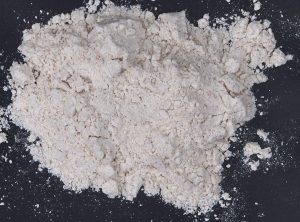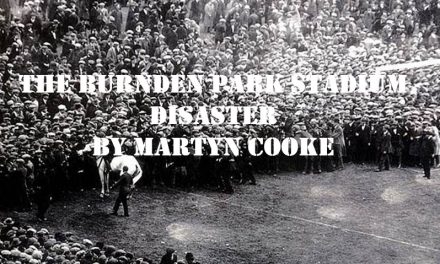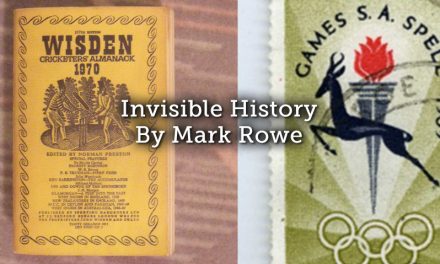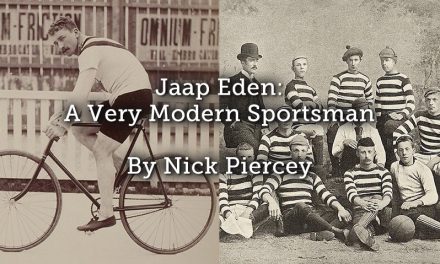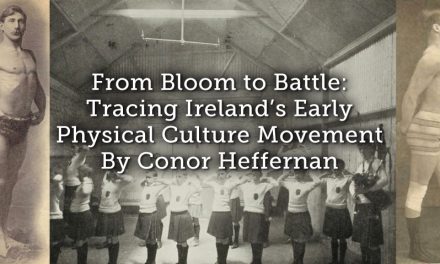For Irish sport lovers in the early 2000s it appeared that a new, and potentially dangerous, drug had entered the market. Known as ‘creatine’, the white powdered supplement was available over the counter in health shops, had infiltrated beloved Irish sports and was said by some in the media to threatening athletes’ lives. The powder first came to the public’s attention during the 1996 Atlanta Olympics when it was found that roughly 80% of the athletes admitted to using creatine. At a time when performance enhancing drugs had come to the fore once again of the sporting world, it appeared that a new, potentially damaging, drug had emerged. There was just one small problem.
Despite the criticism levelled against it, creatine is, nor has it ever, been considered a performance enhancing drug by the World Anti-Doping Agency, the regulatory body established to oversee drug testing in sport. While some federations have banned creatine, the supplement has, for the most part, been deemed safe and ethical to use by many in the sport science community. The supplement, first synthesised in the late nineteenth-century, came to prominence as an aid to muscle recovery and muscle building in the 1980s. Thanks to overly enthusiastic claims about its effects, the first two decades of creatine’s existence saw the supplement vilified by many in the media. It is this vilification, which the current article addresses. In reporting on the use of creatine in Irish rugby in the early 2000s, Irish newspapers and correspondents, intentionally or otherwise, evoked a sort of moral panic around creatine use.
- Image of Creatine Monohydrate, the most common form of Creatine.
Stanley Cohen, the sociologist who coined the phrase ‘moral panic’, used the term to describe actions by which feelings of fear or distrust are spread throughout a society. Cohen initially credited the media with the power to spread this distrust, but subsequent work has extended its scope to include individual lobbies and victim groups among others. In the case of creatine in Irish sport in the early 2000s, a series of articles on creatine were published in remarkably moralistic tones. At a time when the World Rugby Board, Irish Rugby and Football Union and Irish doctors deemed creatine legal, safe and ethical, reports on creatine in Irish rugby resorted to alarmingly levels of sensationalist writing. In examining this phenomenon, the present article looks at two themes running through these articles. First that the use of creatine was akin to cheating and second that Irish schoolchildren were in danger of injuring themselves by taking the substance.
Creatine as Cheating
From 1998 to roughly 2004, rugby correspondents in particular raised concerns about the use of creatine in sport. In Ireland such concerns were most vocally addressed by Tony Ward, an ex-Irish rugby international who also coached schoolboy rugby. Ward, whose opinions were echoed by several correspondents in regional newspapers, labelled creatine as morally wrong and a form of ‘cheating, no matter how you look at it.’ What was interesting about Ward’s comments was that his concern did not stem from creatine’s perceived side-effects but rather the underlying meaning behind its use. Harking back to an older Victorian amateur ethos in which a ‘love of the game’ was presented as the only true motivation for sport, Ward expressed his concern about a supplement that allowed individuals to achieve some form of advantage over others. In a 1998 article entitled ‘Using Creatine is Morally Wrong’, Ward explained his distaste as follows
My argument is purely a moral one. For me, the basis of sport, and rugby in particular has long been its purity. The ability to compete through God-given ability and pure natural graft…
- Tony Ward, ‘Creatine is Cheating No Matter How You Look At It’, The Independent, 27 January (2001), p. 20.
In other articles Ward expressed his distaste for a supplement that was introduced to rugby through the gym and bodybuilding community. While the past two decades has seen keep fit exercise in Ireland become a decidedly more middle-class interest, bodybuilding as an activity in Ireland is still associated primarily with working and lower middle-class participants. Creatine, associated by Ward and others with bodybuilding, was implicitly presented as a working-class supplement which comprised the purity of a traditionally middle-class sport, rugby. Similar to the working-class and amateur athlete tensions found in the late nineteenth and early-twentieth-century, certain newspaper articles demonised creatine for upsetting the purity, play the game spirit found in their sport. Ward, one hastens to add, was not alone in this approach. Arnie Palmer’s article on the use of creatine among rugby players mistakenly likened the subject to anabolic steroids. Jerome Reilly’s Irish Independent article, ‘Even in the GAA’ mourned that Ireland’s national pastime, the GAA, a sport deeply imbued with Irish nationalism, had been infiltrated by a foreign and dangerous supplement.
Such protests were not concerned with creatine’s effect on the body but rather the perceived damage it was doing to the purity of Irish sport. At a time when rugby had only begun to professionalise and the GAA, while still an amateur organisation, placed an increased attention on its training regimens, creatine came to represent a harmful form of professionalisation that had introduced ‘a win at all costs’ mentality.
Creatine and Children
The media also proved keen to discuss the use of creatine by adolescents. Once again issues of class came into play. Acknowledging that creatine was taken primarily by those in their 20s or 30s, articles warning school children, typically teenage boys, away from creatine focused intensely on male rugby players. Aside from his concern that creatine was morally dubious, Tony Ward’s articles expressed concern that schoolboys were taking creatine based upon their coaches’ recommendations. While Ward was perhaps correct in warning teenagers away from supplements, few articles were written to address creatine usage among teenage soccer or GAA players. Rugby was the ideological battleground for concerns about creatine, regardless of the age level involved in the sport.
- ‘Teens Warned Off Muscle Boosters’, The Irish Independent, 07 August (2001), p. 28.
Creatine’s threat to school rugby players was so great that Jim McDaid, the Minister for Sport and Transport from 1997 to 2002, referred creatine to a newly established anti-doping taskforce. McDaid, himself a former practising doctor, echoed concerns found in the media about creatine’s harmful effects for children. In response to those who promoted creatine as safe, McDaid went on record stating that he himself would rule against it and that he saw creatine as a performance enhancing drug. Debates in Dáil Éireann, Ireland’s parliamentary chamber, saw McDaid state unequivocally that he would rule against the taking of creatine, particularly in our schools. I would be very loath to tell any young person to go on to creatine. I would be against the use of particular drugs in sport…
Like Tony Ward, McDaid was particularly concerned with schoolchildren’s use of the supplement. Evidence that schoolchildren, especially those in rugby schools, were actively taking creatine was however, low. No studies had been conducted into the extent of creatine use in Irish schools.
While some studies were conducted at this time into the use of creatine among professional athletes, none were conducted for schoolchildren. The cases cited by Jim McDaid, and more so, Tony Ward, came from personal anecdotes rather than any form of study. This did not, however, prevent a media scare about the prevalence of creatine in schools. Such was the extent of this concern that members of the Irish Rugby Football Union were called upon to act on a perceived crisis in schools. These anecdotes were created by and through the media. They were repeated ad nauseum and rarely critiqued. That they elicited impassioned responses from rugby coaches and one suspects, rugby parents, highlighted power of the media in creating health scares.
Conclusion
From the late 1990s to early 2000s, Irish newspapers simultaneously advertised and railed against creatine, a sport supplement used by athletes, gym goers and, if reporters were to believed, schoolchildren. Invoking Stanley Cohen’s idea of a moral panic, the present article highlighted the manner in which Irish journalists criticised creatine as harmful despite the fact that sport scientists, coaches and anti-doping bodies deemed it safe. In examining just two of the complaints levelled against creatine, it is clear that ideas of professionalism and social class infused reporters’ concerns. Whether creatine was safe at a biological level was often discussed as an afterthought. What mattered was that it signalled a move away from the amateur ethos associated with Irish rugby and had seemingly attracted a youthful following. The moral panics invoked by the media proved remarkably enduring. As recently as 2018, The Independent reported on ‘dangerous’ but legal health supplements being sold in Irish stores which threatened teenager’s health under the title of ‘Snake Oil or Health Booster’. Little it seems, has changed.
Article © Conor Heffernan
References
- Bird, Stephen P., ‘Creatine Supplementation and Exercise Performance: A Brief Review’, Journal of Sports Science & Medicine, 2, no. 4 (2003), pp. 123-132.
- Day, Dave, and Oldfield, Samantha-Jayne, ‘Delineating Professional and Amateur Athletic Bodies in Victorian England’, Sport in History, 35, no. 1 (2015), pp. 19-45.
- Irish Newspaper Archives.
- Monod, Sarah Wright, Making Sense of Moral Panics: A Framework for Research (London, 2017), in particular Chapter Two.


